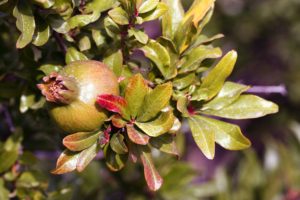In the two previous parts of this brief series I compared the mature Christian to the Shulamite in the Book of Song of Solomon and pointed out that she was, intrinsically, the work of a Great Artist (Song of Solomon 7:1). Furthermore, we looked to her active aesthetic expressions, namely, her verbal and corporeal expressions. But today, I would like to focus on her passive aesthetic expressions, such as her garments, perfumes and ornaments.
God’s purpose
There is, in the Book of Ezekiel, a portion of scripture expressing beautifully God’s intention towards every Christian in the realm of aesthetic. It reads:
‘Thus says the Lord God to Jerusalem: “Your birth and your nativity are from the land of Canaan; your father was an Amorite and your mother a Hittite. 4 As for your nativity, on the day you were born your navel cord was not cut, nor were you washed in water to cleanse you; you were not rubbed with salt nor wrapped in swaddling cloths. 5 No eye pitied you, to do any of these things for you, to have compassion on you; but you were thrown out into the open field, when you yourself were loathed on the day you were born.” (Ezekiel 16:3–5)
Here we have a God-given description of a person before conversion: filthy, naked, thrown out into the open field, receiving no compassion from his fellow men.
But then comes divine grace and mercy:
And when I passed by you and saw you struggling in your own blood, I said to you in your blood, ‘Live!’ Yes, I said to you in your blood, ‘Live!’ 7 I made you thrive like a plant in the field; and you grew, matured, and became very beautiful. Your breasts were formed, your hair grew, but you were naked and bare. (Ezekiel 16:6,7)
Here we have the new birth, the beginning of a new Life. We have also growth and maturation, both creating something magnificent, “…and you became very beautiful.” That’s right! There is a process of “becoming” in the realm of aesthetic. But notice! It doesn’t stop there. What follows is very revealing: “… but you were naked and bare”. Not only naked, but also bare. In other words, something was lacking. She needed to be dressed and adorned. Therefore the text continues:
When I passed by you again and looked upon you, indeed your time was the time of love; so I spread My wing over you and covered your nakedness. Yes, I swore an oath to you and entered into a covenant with you, and you became Mine,” says the Lord God. 9 “Then I washed you in water; yes, I thoroughly washed off your blood, and I anointed you with oil. 10 I clothed you in embroidered cloth and gave you sandals of badger skin; I clothed you with fine linen and covered you with silk. 11 I adorned you with ornaments, put bracelets on your wrists, and a chain on your neck. 12 And I put a jewel in your nose, earrings in your ears, and a beautiful crown on your head. 13 Thus you were adorned with gold and silver, and your clothing was of fine linen, silk, and embroidered cloth. You ate pastry of fine flour, honey, and oil. You were exceedingly beautiful, and succeeded to royalty. 14 Your fame went out among the nations because of your beauty, for it was perfect through My splendor which I had bestowed on you,” says the Lord God.” (Ezekiel 16:8–14)
So she was thoroughly washed and anointed with oil. Then, and only then, God clothed her in embroidered cloth, with fine linen and silk, and gave her sandals of badger skin. “How beautiful are your feet in sandals, o prince’s daughter!” (Song of Solomon 7:1).
So she was no longer naked, yet she was still bare. So God adorned her with ornaments, put bracelets on her wrists, and a chain on her neck. And He put a jewel in her nose, earrings in her ears, and a beautiful crown on her head. “Your cheeks are lovely with ornaments, your neck with chains of gold” (Song of Solomon 1:10).
Thus she was adorned with gold and silver and became exceedingly beautiful. Her fame went out among the nations because of her beauty, for it was perfected through God’s splendor which was bestowed on her: “Out of Zion, the perfection of beauty, God has shone” (Psalm 50:2). So here we have it, the passive aesthetic manifestations of the bride.
A transposition
Now it must be understood that all these texts about beauty reveal God’s intention towards every Christian, for we also have experienced a washing: “He saved us, through the washing of regeneration and renewing of the Holy Spirit” (Titus 3:5). We also have been covered with the robe of righteousness (Isaiah 61:10). But what about the ornaments? Are we adorned as the saints of old? Peter’s words are truly challenging. He writes:
Do not let your adornment be merely outward—arranging the hair, wearing gold, or putting on fine apparel— 4 rather let it be the hidden person of the heart, with the incorruptible beauty of a gentle and quiet spirit, which is very precious in the sight of God. 5 For in this manner, in former times, the holy women who trusted in God also adorned themselves, being submissive to their own husbands, 6 as Sarah obeyed Abraham, calling him lord, whose daughters you are if you do good and are not afraid with any terror.” (1 Peter 3:3–6)
Here we are told that a gentle and quiet spirit, together with a submissive attitude, can serve as ornaments, but beware, this is not only for married women, we all can be adorned, being submissive to our Husband:
For I am jealous for you with godly jealousy. For I have betrothed you to one husband, that I may present you as a chaste virgin to Christ.” (2 Cor. 11:2)
The question is the following: Do we have the kind of ornaments Peter refers to? Do we adorn the doctrine of God our Savior in all things or only in a few things (Titus 2:10)? Are we a garden enclosed, a spring shut up, a fountain sealed (Song of Solomon 4:12)? Do we let God beautify us or do we resist His glorious intention? One thing is certain: the degree of our obedience to Him—that is, the degree in which we apprehend holiness—equals the degree of our beauty in Him. And let us not despair. God is not finished with us.
If you think this post can help somebody you can share it with one of the options presented bellow.
On Christian aesthetic (part four)













